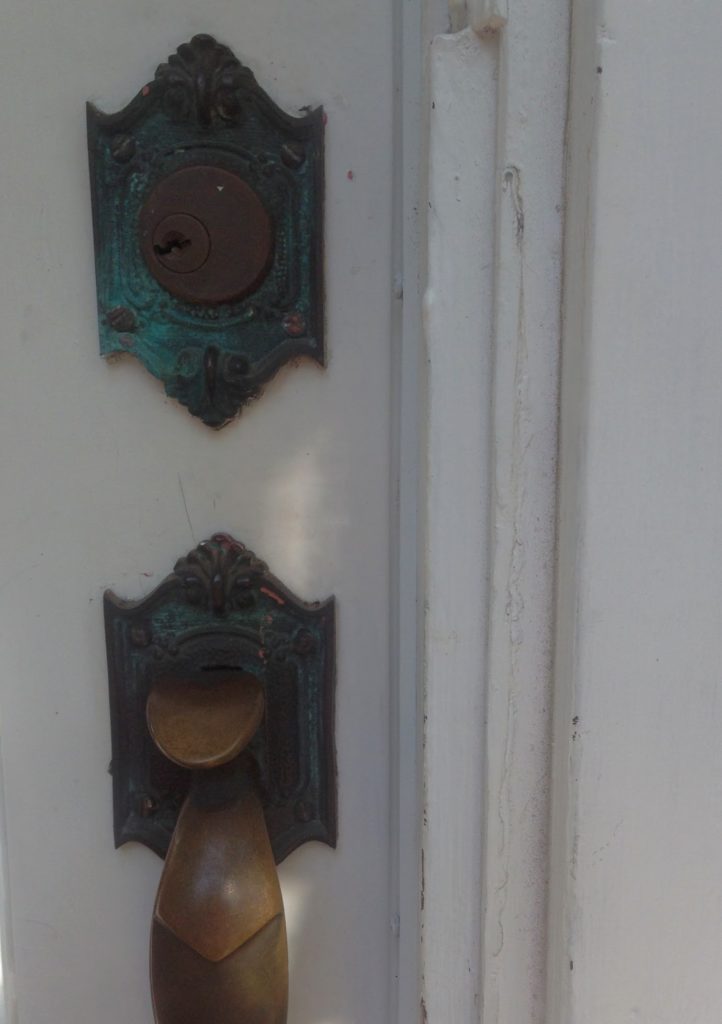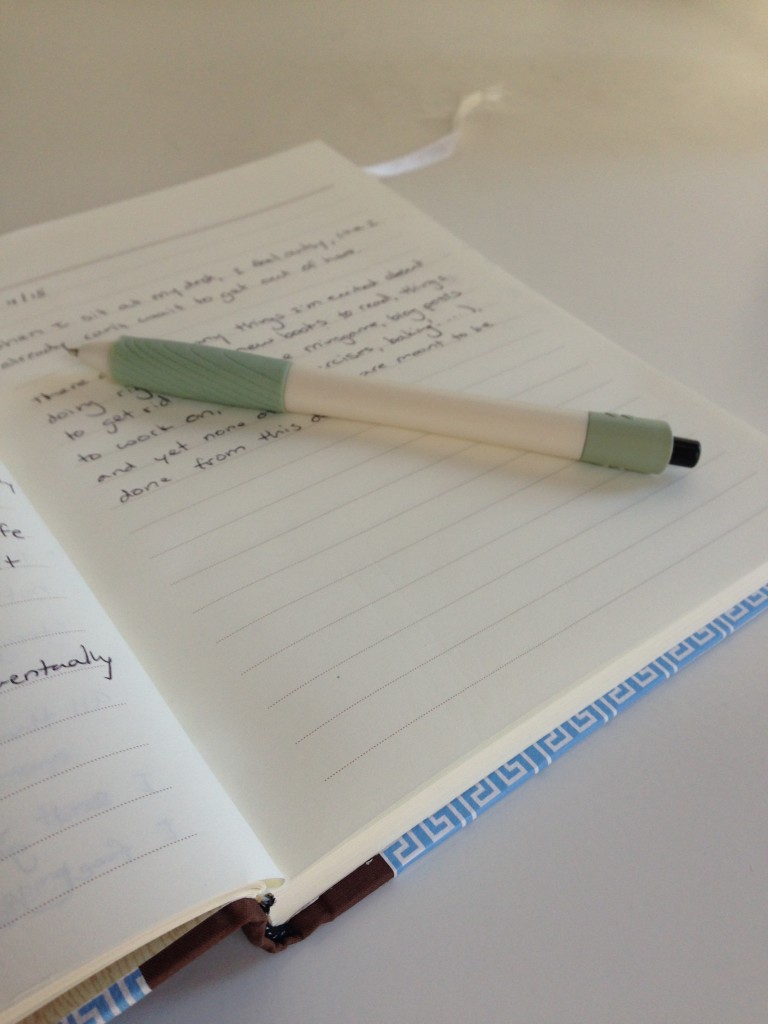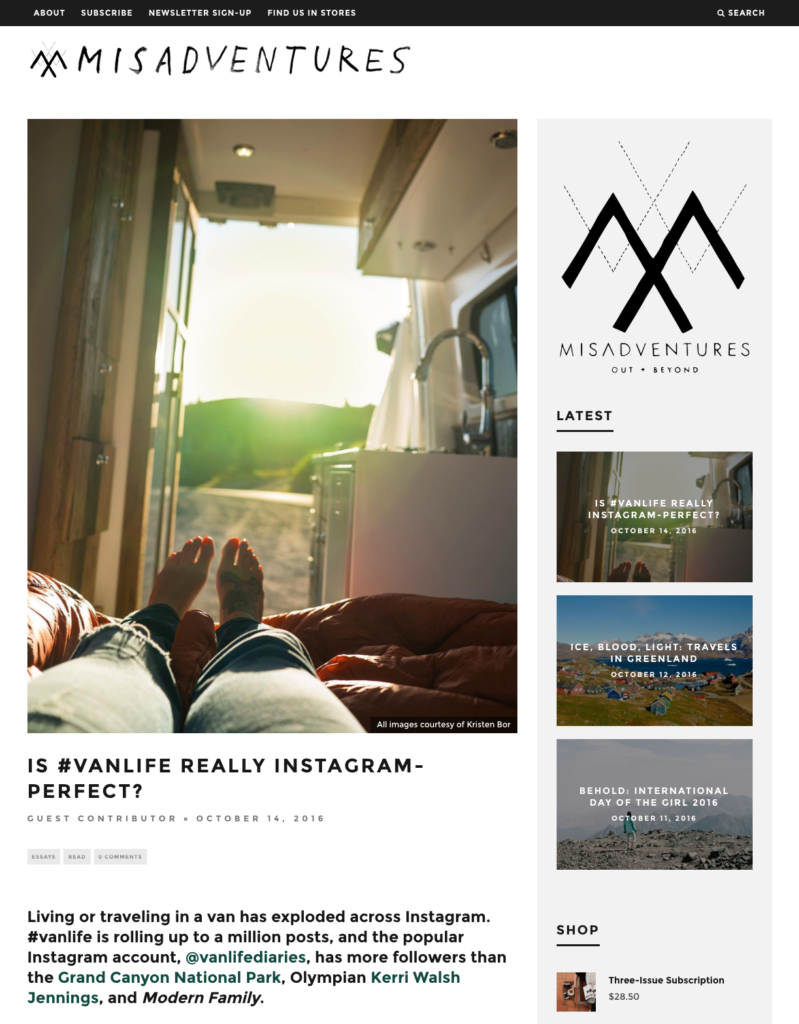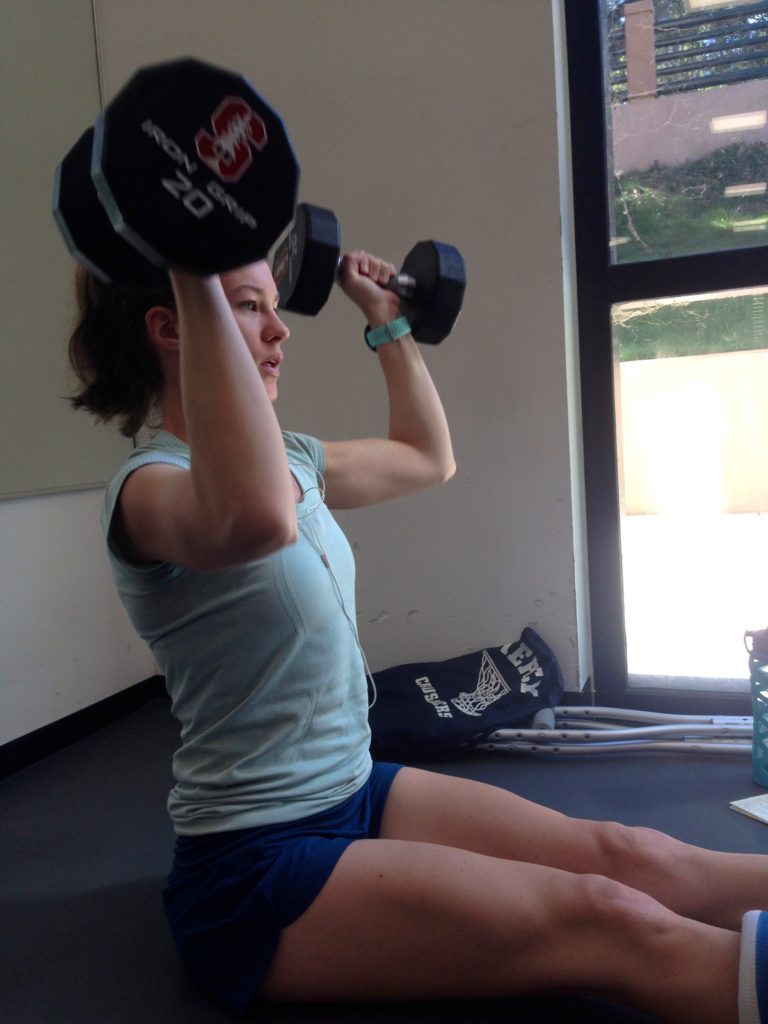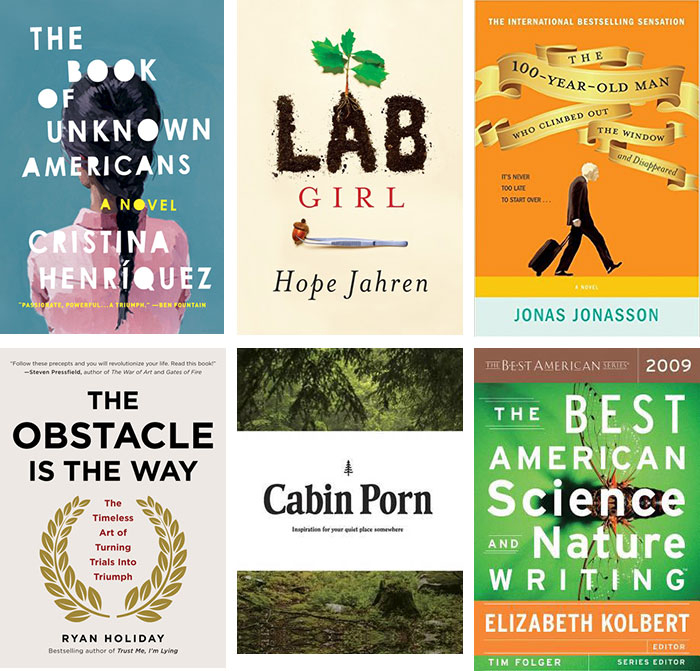It’s been a year since I first hurt my ankle. I’m torn between the part of me that wants to wallow in fate or misfortune and the other that’s ready to celebrate.
This has been a year of challenge. A year of learning. A year of pushing my limits and redefining the way I see myself.
Of course I miss running like crazy and I want to be the badass I once was, but I am way more resilient and grateful than that woman was. She didn’t know how hard it was to feed yourself on crutches. She never woke up crying in the middle of the night because her ankle was on fire. She didn’t know what it was like to persevere through a full year of pain and frustration and set backs.
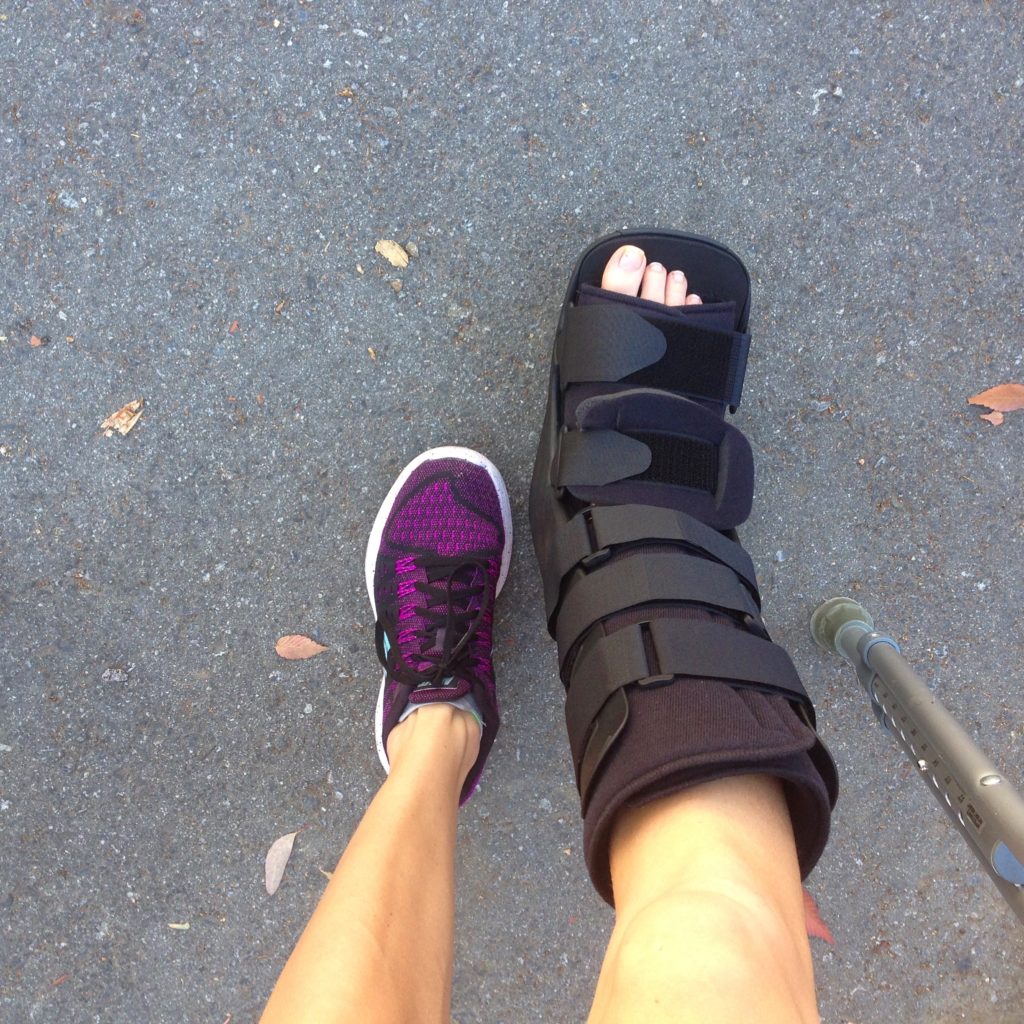
What I learned from my year-long injury
1. You can sob all you want, but you can’t change reality.
I fell apart as my friend helped me off the court. I couldn’t accept that I was poised to set a PR and instead I was going to be rehabbing a severely injured ankle. Crying and disbelief won’t change anything.
2. Ice cream won’t kill you.
I’ve done my best over the past year to severely limit my sugar intake. It’s a known inflammatory food and I need all the help I can get healing. While I stand by my decision, I also don’t regret the times I had ice cream or another sweet treat.
3. You aren’t what you do.
Runner. Yogi. Lifter. Athlete. These are all just parts of me. They don’t define me. And even when I’m not able to do them, that doesn’t mean they aren’t still a part of my identity and a part of what makes me me.
4. Do what you love.
I love to run and push myself and move my body, but even before I discovered my love for sports I fell for books. This year has given me the opportunity to spend more time than ever before reading. Reading has fulfilled me in ways that running or lifting arguably could not.
5. But how is it today?
It’s so easy to get caught up in how I think things should go or should be. But life doesn’t work like that. I had to learn to take my recovery a day at a time and realize that each day was going to be wildly different. Turns out it fits for even more than just an injury. Things look and feel different every day. Some days cooking feels like the worst way to spend my time and others it leaves me feeling warm and content. How is it today?
6. Slow down.
There’s nothing like crutches or a bulky boot to slow you down. But more than physically, I had to try to slow down mentally. As much as I tried, you just can’t look ahead two months and try to project where you will be. Recovery is slow and your body does its own thing. This year forced me to drop my obsessive planning and projecting, or at least try to.
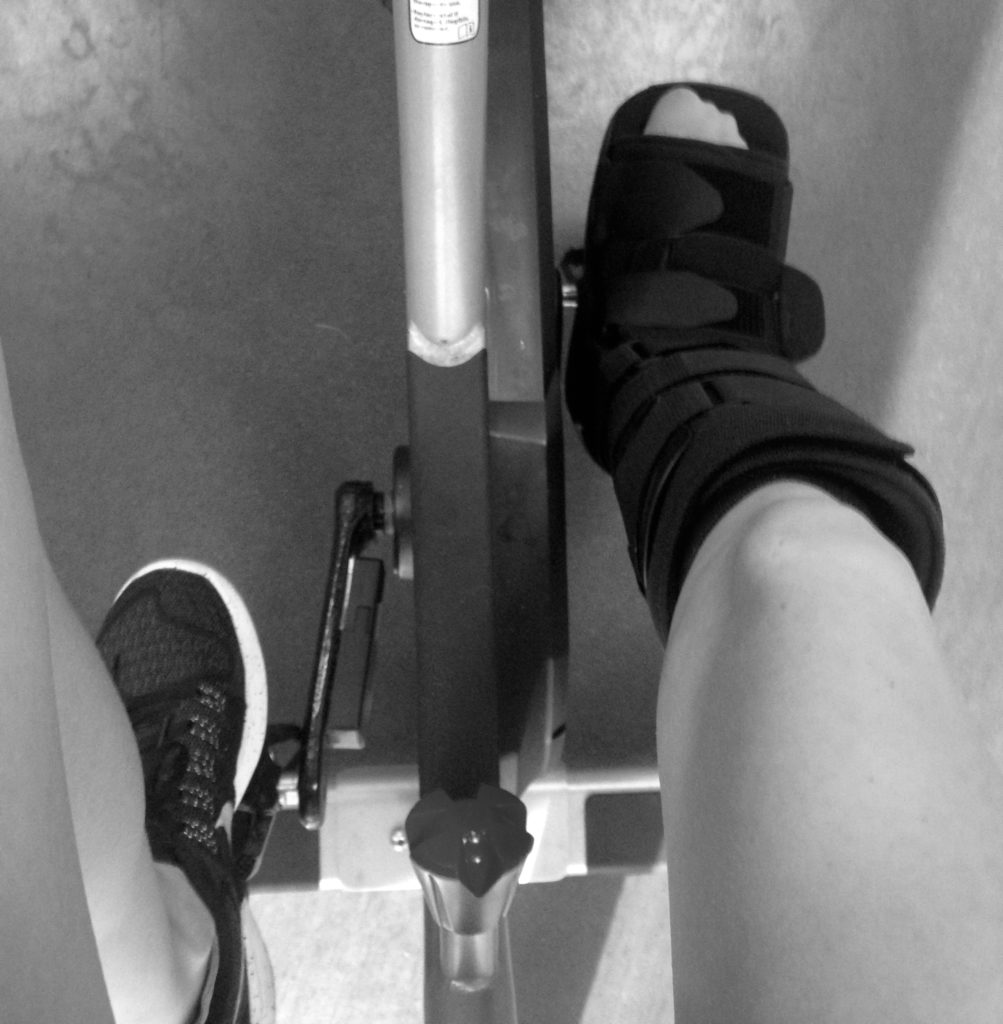
7. Keep moving.
An injury (most of the time) isn’t a sentence to the couch. I did my best to move both before and after surgery. I don’t always feel like exercising these days and it’s really difficult for me to make it to the gym since I still can’t drive, but I’m trying my best. A very nice woman around my age who was doing a seriously badass workout came up to me and told me that seeing me workout in a boot was really inspiring to her. She made me realize that it should be inspiring to me too. It forced me to look at what I was doing and the effort I’ve been putting in and appreciate my effort more.
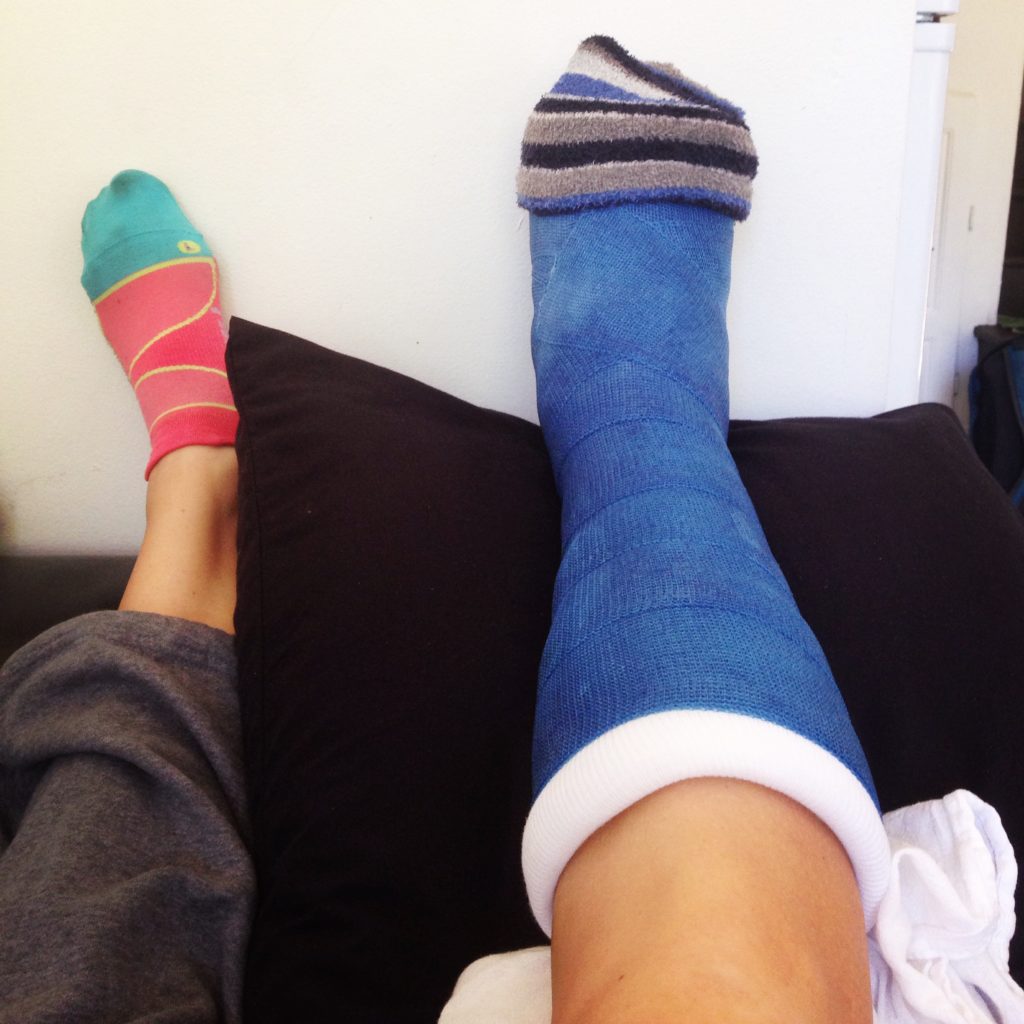
8. Put your feet up.
Don’t forget to relax. Healing takes time and a ton of your body’s energy. Respect that! A week after my surgery I thought I could go to the farmer’s market. I was so wrong. I ended up sitting on a cold concrete bench willing myself to apparate home. Even almost two months later, I still feel like I have to sleep all day after a workout. Indulge in healing. Treat yourself to some elevation and a nice soothing soak.
9. Listen to yourself.
That pain is your body trying to tell you something. The voice in your head that says “this is a bad idea” is probably right (unless it’s just fear talking, then tell it to STFU). I’ve gotten a lot better this year at checking in with how I feel and adjusting accordingly. In the past I’ve been the queen of pushing through pain, which usually ends in a lingering injury. Since I already have one of those, I’m trying to be extra in-tune with what my body needs and what I really want. It’s changed the way I work, spend my time, and exercise.
10. Pain is temporary*.
It’s so hard to remember that it won’t last forever when you’re in the thick of it. The pain spreads like wildfire, lashing at everything in its path. But it will burn out. In a few days or a few weeks, you won’t remember just how bad it was. It will slowly drain away until there’s nothing left.
*I am blessed that this is actually true for me. I don’t know how people handle debilitating pain on a daily basis. Those people deserve our admiration, love, and help.
11. Trust.
This year I learned to trust. To let myself be taken care of. I’ve never had surgery, and while I was ready for this to be all over, I wasn’t thrilled with the idea. I put complete trust in my surgeon and the entire team. I felt safe going under, and while I recovered I forced myself to let go and lean on my friends and family. I also have to trust that I’m going to recover and be back to 100 percent in the future.
Where I am now
Lately I’ve been having weird flashbacks to the first month of my injury. Post surgery it seemed like I was in worse shape than when I first hurt it, but now that I’m really making progress it reminds me of last October. Only this time I actually know what’s going on and what my body responds to best.
After weeks of crutches and cast/boot life, I’m so happy with my progress.
Goodbye Crutches
FINALLY! I was originally told I would be on crutches for three weeks post-surgery. What they really meant was I could not put any weight on my foot for three weeks. After that I would slowly! transition to weight-bearing until I could walk without my crutches. It took me two weeks or so to get down to one crutch and be able to walk the seven steps from the sink to the dining room table without feeling like I was ripping my ankle in half.
Last night I walked two (short) blocks in just the boot and felt pretty good! The way back to the car was less fun and rest of the night was a bit uncomfortable and swollen, but it felt so good to move around in the world without the crutches.
Bye Bye Boot-y (er… sort of)
A couple weeks ago I got the okay from my doctor to start putting weight on my foot without the boot. I started with putting a teeny tiny bit of weight on my foot while brushing my teeth or showering. Progress has been slow, but earlier this week I made it up and down the stairs in Tiny House in just my socks. I’m still stupid proud of myself.
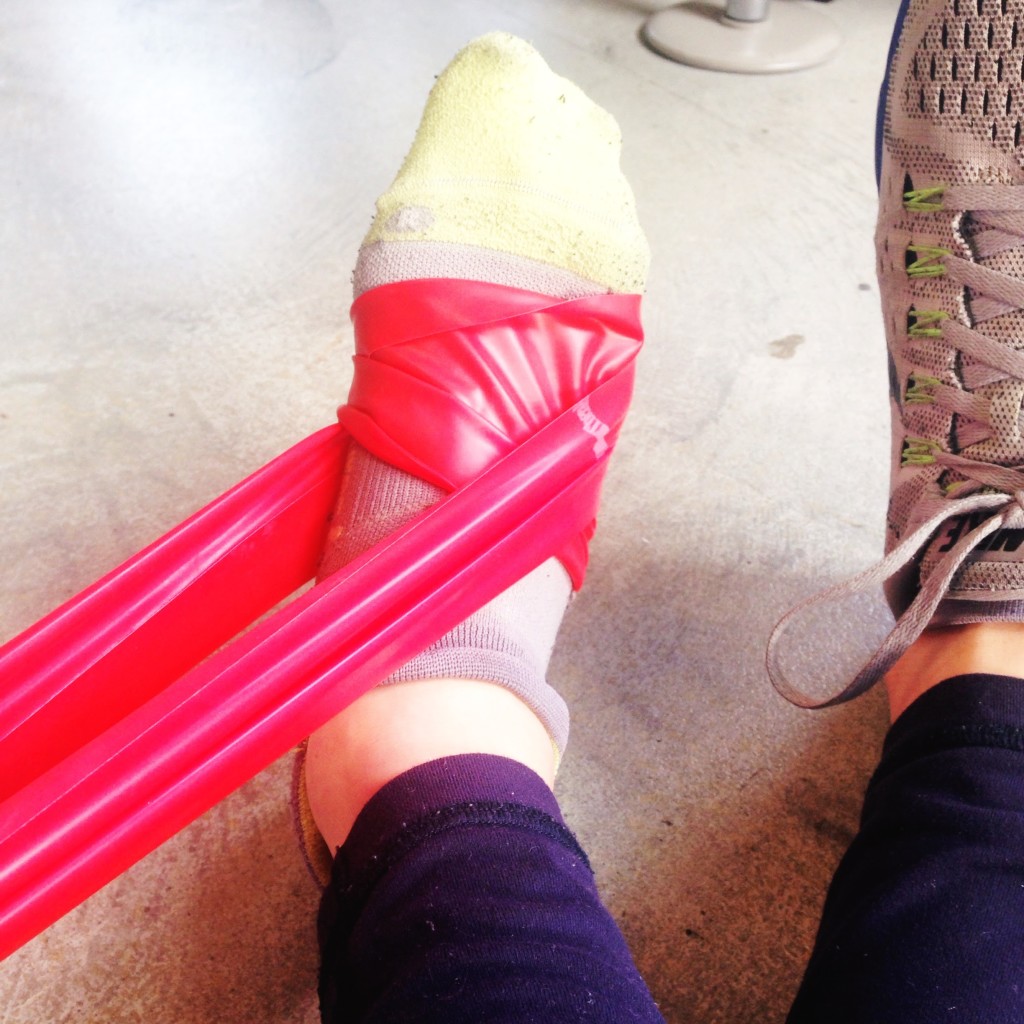
Physical Therapy (Round 2)
I’m back to doing nightly Thera-Band exercises in addition to everything else I’ve been doing. It’s only been a week, and my progress is astounding. Physical therapy gives me the warm and fuzzies. And hope for the future. And really weird marks.
